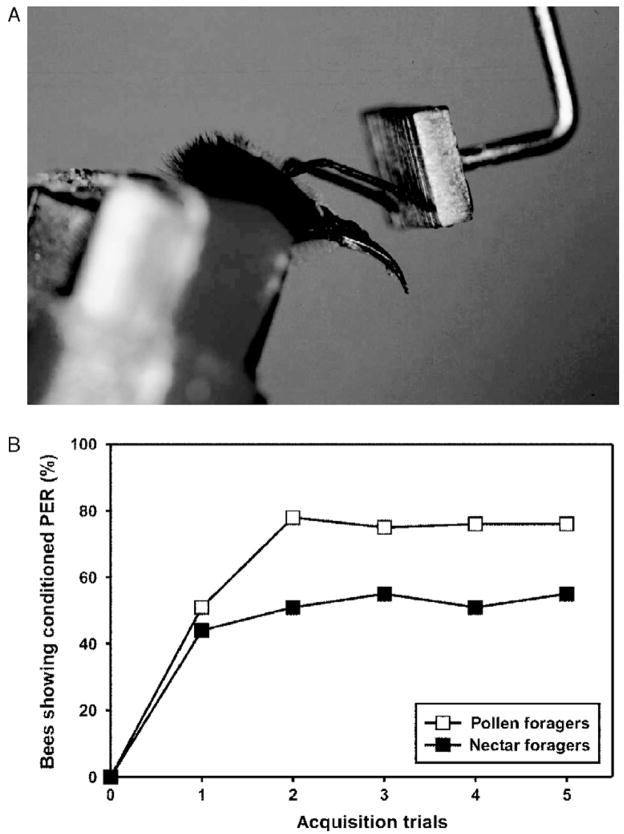Figure 4.
Tactile learning. (A) Honeybee showing conditioned proboscis extension response during tactile antennal conditioning. In this learning paradigm, the bee is rewarded for scanning a tactile object. The sucrose reward is briefly presented to the antenna. When the bee extends her proboscis after antennal stimulation with sucrose, she can imbibe a droplet of sucrose solution. After few conditioning trials, the bee shows conditioned proboscis extension while scanning the tactile target plate. (B) Acquisition curves of pollen and nectar foragers in tactile antennal learning. The x-axis shows the acquisition trials. The y-axis shows the percentage of bees displaying the conditioned proboscis extension response (PER). Both groups have reached the plateau of their acquisition function after three acquisition trials. However, the level of acquisition is higher in pollen foragers than in nectar foragers.

